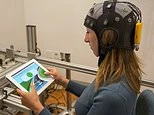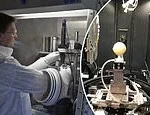Embracing the Fifth Industrial Revolution: The Integration of Humans and AI
As we progress further into the digital age, scientists, engineers, and business leaders are noticing a remarkable merging between human beings and artificial intelligence (AI). The concept of the Fifth Industrial Revolution (IR 5.0) is now a reality, marking a significant departure from the steam-powered machinery of the 1780s.
Understanding the Momentum of IR 5.0
Many researchers and experts herald the arrival of IR 5.0, identifying the deep collaboration of humans and AI across various sectors of the economy. This revolution is anticipated to propel humanity into the ‘Cognitive Age,’ an era defined by an unprecedented union between human intelligence and advanced AI capabilities.
The groundbreaking shift promises to bridge the gap between artificial and human intelligence, transforming the way we perceive and interact with machines. The fusion of sensory capabilities into AI models is not simply a technological advancement but a fundamental shift in philosophical understanding.
This movement challenges the traditional concept of machines as mere logic boxes, as AI systems are now capable of independently experiencing and interacting with the world through an array of advanced sensors, such as voice and image recognition.
The evolution of Human-Machine Interaction
IR 5.0 entails a monumental leap in machine learning, granting AI systems a more holistic understanding of contextual elements, thereby enriching the human experience in previously unimaginable ways. The integration of brain-computer interfaces, exemplified by Elon Musk’s Neuralink, further solidifies the symbiotic relationship between humans and AI.
Imagine a world where AI-powered robots possess the ability to perceive, interpret, and synthesize data from a myriad of sensors, thereby transcending the boundaries of traditional human-AI interaction. These advancements signify a transformative era that revolutionizes our perception of technology as coexistent and coevolutionary with humanity.
Educational and research Endeavors in IR 5.0
As society grapples with the implications of IR 5.0, educational institutions and research organizations are actively engaging with this transformative concept. Colleges and universities worldwide are aiming to equip students and professionals with the requisite knowledge to comprehend and adapt to the evolving landscape of the Fifth Industrial Revolution.
Institutions like Seton Hall and MIT have initiated courses and seminars focused on IR 5.0, underscoring the urgency of preparing the workforce for the unprecedented changes brought forth by this technological wave. The commitment to delving into IR 5.0 is further evident in research initiatives such as the collaboration between the US Department of Commerce and academic institutions.
The provision of grants and funds for research endeavors elucidates the proactive stance taken to explore the potential applications of AI in manufacturing and various industries. The integration of AI in manufacturing processes is seen as a means to empower workers, enabling them to harness advanced technology to revolutionize the manufacturing ecosystem.
Ethical Considerations and policy Imperatives
Amidst the pervasive optimism surrounding IR 5.0, there remains a palpable sense of caution among industry leaders and ethics experts. The potential ramifications of this technological revolution necessitate a comprehensive framework that addresses ethical concerns and human-friendly policy imperatives.
Establishing protocols for the ethical and humane use of AI is paramount to ensure that the Fifth Industrial Revolution is leveraged for the collective good of society. The discourse on ‘neurorights’ and data privacy transparency emphasizes the imperative need to safeguard individual rights in the wake of rapid technological advancements.
Industry stalwarts advocate the appointment of a Chief Ethical and Humane Use Officer to navigate the ethical terrain and ensure that AI technologies are utilized for the betterment of humanity. The emphasis on sustained ethical considerations reflects a collective commitment to eradicating potential misuses of AI in the context of IR 5.0.
Embracing the Transformative Potential of IR 5.0
While uncertainties and apprehensions persist, the Fifth Industrial Revolution presents an unparalleled opportunity to harness the synergistic potential of human and AI collaboration. This transformative journey offers the promise of a technology-driven future where humans and machines coalesce to shape an innovative and enriching societal landscape.
As we venture into the Cognitive Age, characterized by a profound fusion of human and machine intelligence, the need for proactive legislation and comprehensive ethical frameworks becomes increasingly pronounced. The dynamic interplay between humanity and technology beckons us to embark on this evolutionary path with conscientiousness and foresight.
Source: dailymailuk








No Comments